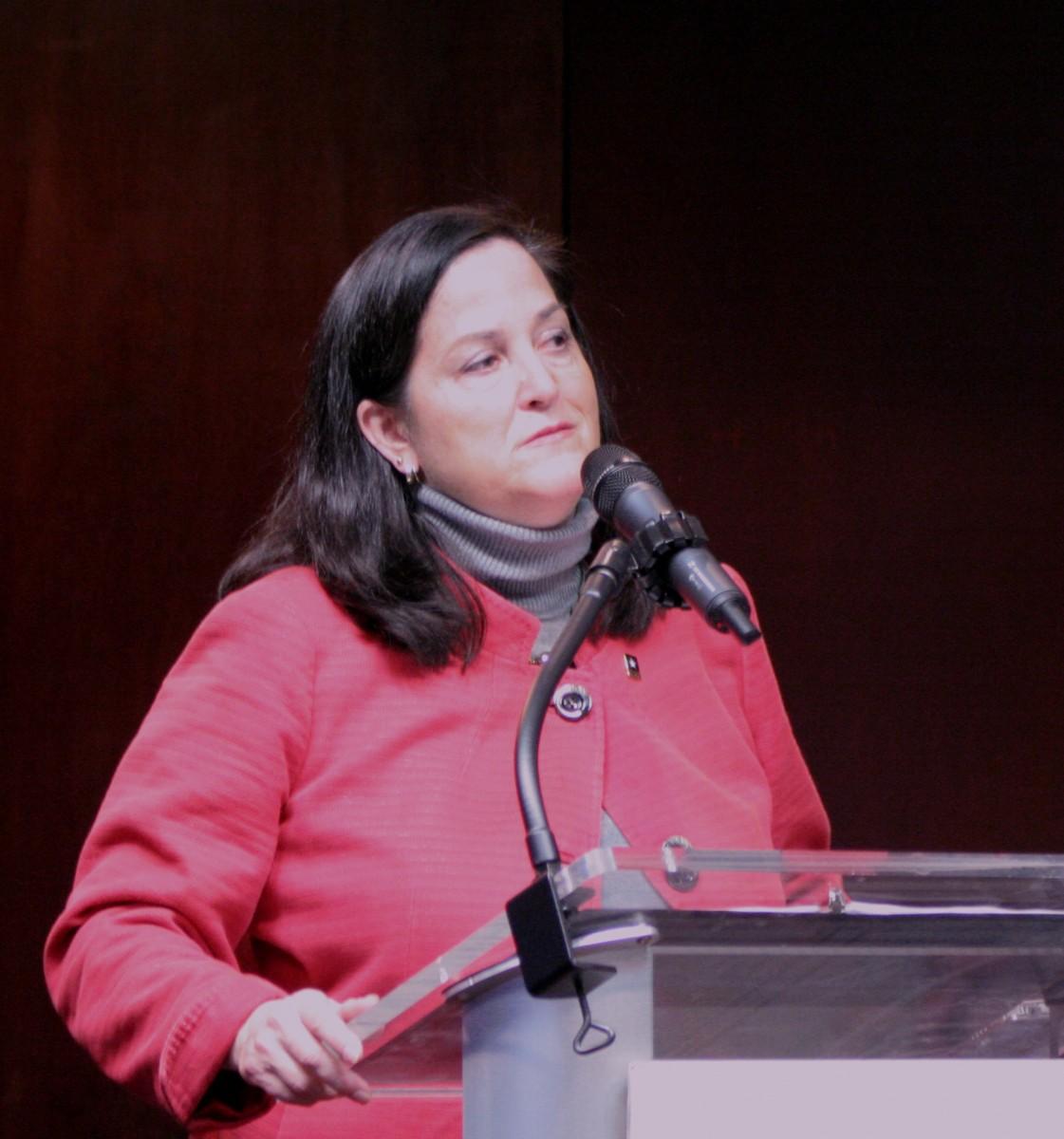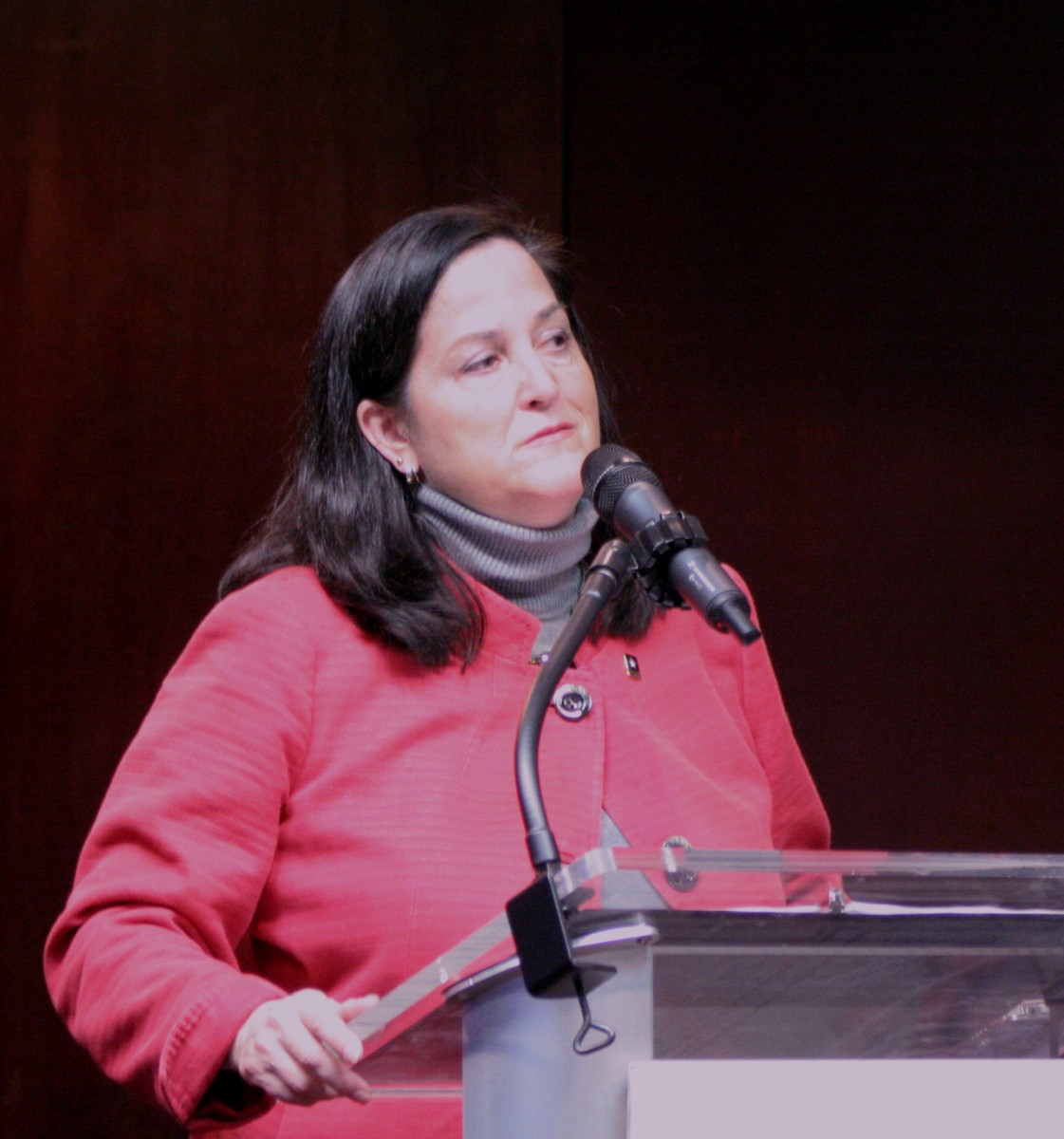WASHINGTON—The U.S. Army is serious about going green and is setting an example for the civilian side. It is experimenting on 17 pilot installations with the ultimate aim of creating “net zero installations” by 2020, conserving energy and water, and reducing or recycling waste in various ways.
The Atlantic Council’s Energy and Environment Program hosted Assistant Secretary of the Army for Installations, Energy, and Environment Katherine Hammack on Feb. 27. She explained the Army’s net zero program.
Hammack said that net zero energy aims “to produce as much energy as consumed over the year.”
But the Army’s goal is not limited to energy only. Net zero programs apply to water and waste management as well.
“Fresh water resources are returned back to the same watershed so that water consumption is in balance with the environment there,” said Hammack. The waste program is “to reduce (take to zero) solid waste going to the landfill.”
Net zero waste reduces, reuses, and recovers waste streams and converts them to resources with zero solid waste going to landfills.
Hammack said that the project is intended primarily for buildings on bases in the states, and in South Korea and Germany. Potentially, it can affect the management of just under 1 billion square feet (962 million square feet), including housing, retail outlets, restaurants, and commissaries for 2.2 million soldiers and their families. Hammack likened the task to overseeing 152 small cities with a colonel or lieutenant colonel as city managers.
The U.S. Army is the “largest facility user of energy in the United States,” with a $1.3 billion utility bill annually, said Hammack. The Army spent $3.6 billion on liquid fuel purchases in fiscal year 2012, according to official Army data. Hence, there are great opportunities for conservation and renewable energy use.
Hammack showed a chart where in 2011, about 70 percent of the energy used in Army facilities was electric grid and the rest was propane or natural gas. The aim is to gradually reduce the amount of energy used by almost half. By 2020 in installations participating in the net zero energy project, nearly all of the electric grid and propane/natural gas will be replaced by renewables: biomass, wind, geothermal, PV (photovoltaic) and solar hot water.
Implementing Net Zero
It sounds great in theory but getting there requires new thinking and determination to find better ways in energy use, and water and waste management. The Army didn’t order installations to join the programs, although some generals were predisposed to doing it that way, said Hammack. Instead, the Army asked for volunteers. Over 100 installations applied, she said. “Those that volunteered had a passion and some good ideas on how to get there,” said Hammack, adding that was the attitude they were seeking.
Most of the installations chose to focus on one program, for example, West Point, N.Y. (net zero energy), Fort Hood, Texas (net zero waste) and Fort Riley, Kan. (net zero water). Only two of the installations, Fort Bliss, Texas, and Fort Carson, Colo., volunteered for all three net zero programs.
The biggest and first step in making progress in energy, water, or waste is to reduce energy, water, or waste consumption.
Speaking about energy, Hammack said, “The easiest first step is to not use energy.” She gave an example of energy savings after the March 2011 tsunami in Japan. That country had to reduce its energy consumption by 15 percent. The American base in Japan reduced its energy use by 18 percent initially and by 23 percent by the end of summer, Hammack said. This was “behavior change” and didn’t cost any money.
New thinking is required in waste management too. Hammack gave the example of disposing of mattresses. They did some research and found a manufactured mattress that was completely recyclable, and so would not go to the landfill when its life was over. Hammack said that we need to think about the recycle method at the point of purchase.
The overall process of making improvements requires an audit at the particular installation of its energy use, “water balance,” or “waste streams.” Thinking outside the standard toolbox, analysis is done next on promising alternatives.
It’s also important to bear in mind that the three kinds of net zero projects are connected; so, there is energy-water, energy-waste, water-waste, and energy-water-waste. Net zero must be undertaken holistically, Hammack said. For example, net zero energy-waste may use waste-to-energy technology that converts the waste that can’t be composted or recycled into energy.
The Army isn’t doing net zero alone. It is collaborating with other federal entities: the Department of Energy, the Environmental Protection Agency, and the General Services Administration. Army pilot programs also work with local communities toward developing regional solutions, such as recycling.
Hammack said that already some of the waste programs are actually generating income. The latter is being used to support families and “moral welfare programs.” So, not only do the programs save on shipping waste to landfills, they also reduce costs of the installation.
Soon the Army will finalize its net zero policy, taking best practices and institutionalizing them, Hammack said. A garrison commander’s guide for net zero will be coming soon that can be used at any installation. The guide tells where to look for help or ideas, and who has already tried something. The Army will also be publicly releasing summaries of net zero energy studies, water balance assessments, and project solutions to energy, water, and waste management by the end of 2013.
“The intent of releasing data on our progress is so that it can be a tool used by communities, used by other cities or even used by large campuses, like universities,” Hammack said.
Ultimately, however, the U.S. Army wouldn’t be doing net zero if it didn’t enhance mission effectiveness. The projects save money and they are good for the environment but those outcomes are incidental to the mission. “The Net Zero project is about the ability of the Army to provide this nation services that are needed in case of an emergency or natural disaster,” Hammack said.
They also teach soldiers lessons that can be taken to the theater. Soldiers acquire confidence, for instance, with using solar panels or waste management practices that can be applied in Afghanistan or anywhere else they are deployed, she said.
The Epoch Times publishes in 35 countries and in 19 languages. Subscribe to our e-newsletter.






